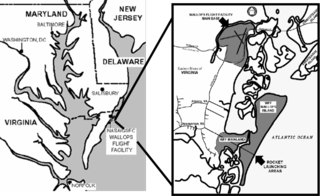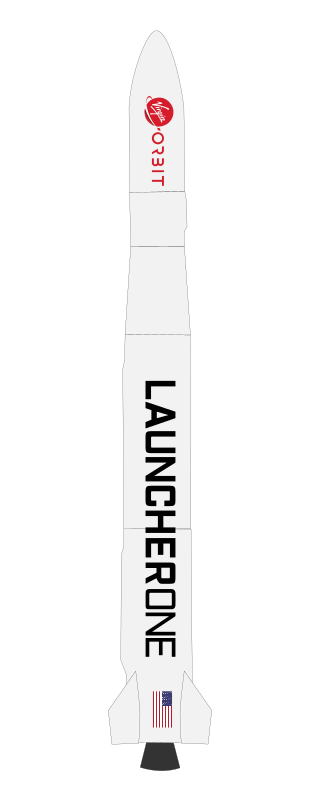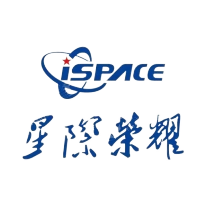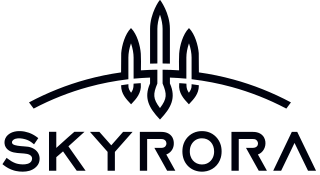
The Mojave Air and Space Port at Rutan Field is in Mojave, California, United States, at an elevation of 2,801 feet (854 m). It is the first facility to be licensed in the United States for horizontal launches of reusable spacecraft, being certified as a spaceport by the Federal Aviation Administration on June 17, 2004. The facility covers 2,998 acres and has three runways.

Wallops Flight Facility (WFF) is a rocket launch site on Wallops Island on the Eastern Shore of Virginia, United States, just east of the Delmarva Peninsula and approximately 100 miles (160 km) north-northeast of Norfolk. The facility is operated by the Goddard Space Flight Center in Greenbelt, Maryland, and primarily serves to support science and exploration missions for NASA and other Federal agencies. WFF includes an extensively instrumented range to support launches of more than a dozen types of sounding rockets; small expendable suborbital and orbital rockets; high-altitude balloon flights carrying scientific instruments for atmospheric and astronomical research; and, using its Research Airport, flight tests of aeronautical research aircraft, including unmanned aerial vehicles.

The Pacific Spaceport Complex – Alaska (PSCA), formerly known as the Kodiak Launch Complex (KLC), is a dual-use commercial and military spaceport for sub-orbital and orbital launch vehicles. The facility is owned and operated by the Alaska Aerospace Corporation, a corporation owned by the Government of Alaska, and is located on Kodiak Island in Alaska.

Masten Space Systems was an aerospace manufacturer startup company in Mojave, California that was developing a line of vertical takeoff, vertical landing (VTVL) rockets, initially for uncrewed research sub-orbital spaceflights and eventually intended to support robotic orbital spaceflight launches.
UP Aerospace, Inc. is a private spaceflight corporation headquartered in Denver, Colorado. UP Aerospace provides sub-orbital transportation for corporate, military and educational payloads, via their SpaceLoft XL sounding rocket launch vehicles.
The SpaceLoft XL is a sounding rocket developed by private spaceflight company UP Aerospace. The rocket is capable of lofting a 79 lb (36 kg) payload to a sub-orbital trajectory with an apogee of about 71.5 miles (115 km). It travels for approximately 60 seconds to cross the Kármán line. All launches are sub-orbital and do not complete one orbital revolution. Launches are conducted from the company launch facility at Spaceport America in Upham, New Mexico.

Spaceport America, formerly the Southwest Regional Spaceport, is an FAA-licensed spaceport located on 18,000 acres (7,300 ha) of State Trust Land in the Jornada del Muerto desert basin 45 miles (72 km) north of Las Cruces, New Mexico, and 20 miles (32 km) southeast of Truth or Consequences. With Virgin Galactic's launch of the VSS Unity, with three people aboard, on May 22, 2021, New Mexico became the third US state to launch humans into space after California and Florida.

Rocket Lab USA, Inc. is a publicly traded aerospace manufacturer and launch service provider that operates and launches lightweight Electron orbital rockets used to provide dedicated launch services for small satellites as well as a suborbital variant of Electron called HASTE. The company plans to build a larger Neutron rocket as early as 2025. Electron rockets have launched to orbit 46 times from either Rocket Lab's Launch Complex 1 in New Zealand or at the Mid-Atlantic Regional Spaceport in Wallops Island, Virginia, United States. Rocket Lab has launched one sub-orbital HASTE rocket to date from Wallops Island, Virginia. In addition to the Electron, Neutron, and HASTE launch vehicles, Rocket Lab manufactures and operates spacecraft and is a supplier of satellite components including star trackers, reaction wheels, solar cells and arrays, satellite radios, separation systems, as well as flight and ground software.

A space tug is a type of spacecraft used to transfer spaceborne cargo from one orbit to another orbit with different energy characteristics. The term can include expendable upper stages or spacecraft that are not necessarily a part of their launch vehicle. However, it can also refer to a spacecraft that transports payload already in space to another location in outer space, such as in the Space Transportation System concept. An example would be moving a spacecraft from a low Earth orbit (LEO) to a higher-energy orbit like a geostationary transfer orbit, a lunar transfer, or an escape trajectory.

LauncherOne was a two-stage orbital launch vehicle developed and flown by Virgin Orbit that had operational flights from 2021 to 2023, after being in development from 2007 to 2020. It was an air-launched rocket, designed to carry smallsat payloads of up to 300 kg (660 lb) into Sun-synchronous orbit (SSO), following air launch from a carrier aircraft at high altitude. The rocket was carried to the upper atmosphere on a modified Boeing 747-400, named Cosmic Girl, and released over ocean. Initial work on the program was done by Virgin Galactic, another Virgin Group subsidiary, before a separate entity — Virgin Orbit — was formed in 2017 to complete development and operate the launch service provider business separately from the passenger-carrying Virgin Galactic business.

Astra Space, Inc. is an American launch vehicle company based in Alameda, California. Astra was incorporated in October 2016 by Chris Kemp and Adam London. Formerly known in media as "Stealth Space Company", the company formally came out as Astra Space, Inc. in a Bloomberg L.P. article by Ashlee Vance. Investors include BlackRock, Advance, ACME, Airbus Ventures, Innovation Endeavors, Salesforce co-founder Marc Benioff, former Disney CEO Michael Eisner, and more.

Electron is a two-stage, partially reusable orbital launch vehicle developed by Rocket Lab, an American aerospace company with a wholly owned New Zealand subsidiary. Electron was developed to service the commercial small satellite launch market. As of May 2024, it’s the third most launched small-lift launch vehicle in history. Its Rutherford engines are the first electric-pump-fed engine to power an orbital-class rocket. Electron is often flown with a kickstage or Rocket Lab's Photon spacecraft. Although the rocket was designed to be expendable, Rocket Lab has recovered the first stage twice and is working towards the capability of reusing the booster. The Flight 26 (F26) booster has featured the first helicopter catch recovery attempt.

Vector-R is a two-stage orbital expendable launch vehicle under development by the American aerospace company Vector Launch to cover the commercial small satellite launch segment (CubeSats). Vector Launch went bankrupt in December 2019 and re-emerged in October 2020. Two prototypes were launched in 2017.

i-Space —also known as Space Honor, Beijing Interstellar Glory Space Technology Ltd., Interstellar Glory or StarCraft Glory—is a Chinese private space technology development and space launch company based in Beijing, founded in October 2016.

Skyrora Ltd is a British private space company based in Edinburgh, Scotland, since 2017.

BluShift Aerospace is an employee-owned American aerospace firm based in Brunswick, Maine. Targeting the growing smallsat and cubesat launch markets, bluShift is developing suborbital sounding rockets and small-lift orbital rockets which will be launched from a proposed new spaceport in Maine. The company has received primary funding from NASAs SBIR grant program, the National Science Foundations I-Corps grant program, the Maine Technology Institute, and the Maine Space Grant Consortium. The company has active operations at the former Brunswick Naval Air Station and Loring Air Force Base.

Equatorial Space Systems PTE LTD. also known as Equatorial Space, is a Singapore-based company that develops hybrid-engine rockets and space launch services. The company was founded by Simon Gwozdz and Praveen Ganapathi Perumal in 2017 in Singapore, with the goal to develop low-cost, safe and eco-friendly space launch vehicles.

ABL Space Systems is an American aerospace and launch service provider, based in El Segundo, California, that manufactures deployable launch vehicles and infrastructure for sending commercial small satellites into orbit. The company manufactures its components in the United States.

Rocket 1, Rocket 2, and Rocket 3 were a series of small-lift space launch vehicles designed, manufactured, and operated by American company Astra. The rockets were designed to be manufactured at minimal cost, employing very simple materials and techniques. They were also designed to be launched by a very small team, and be transported from the factory to the launch pad in standard shipping containers. Rocket 1 was test vehicle made up of a booster equipped with five Delphin electric-pump-fed rocket engines, and a mass simulator meant to occupy the place of a second stage. Rocket 2 was a prototype similar to Rocket 1. Rocket 3 was a launch vehicle which added a pressure-fed second stage to the Delphin-powered booster. Its definitive variant, Rocket 3.3, featured a lengthened booster, and delivered satellites to orbit.

















